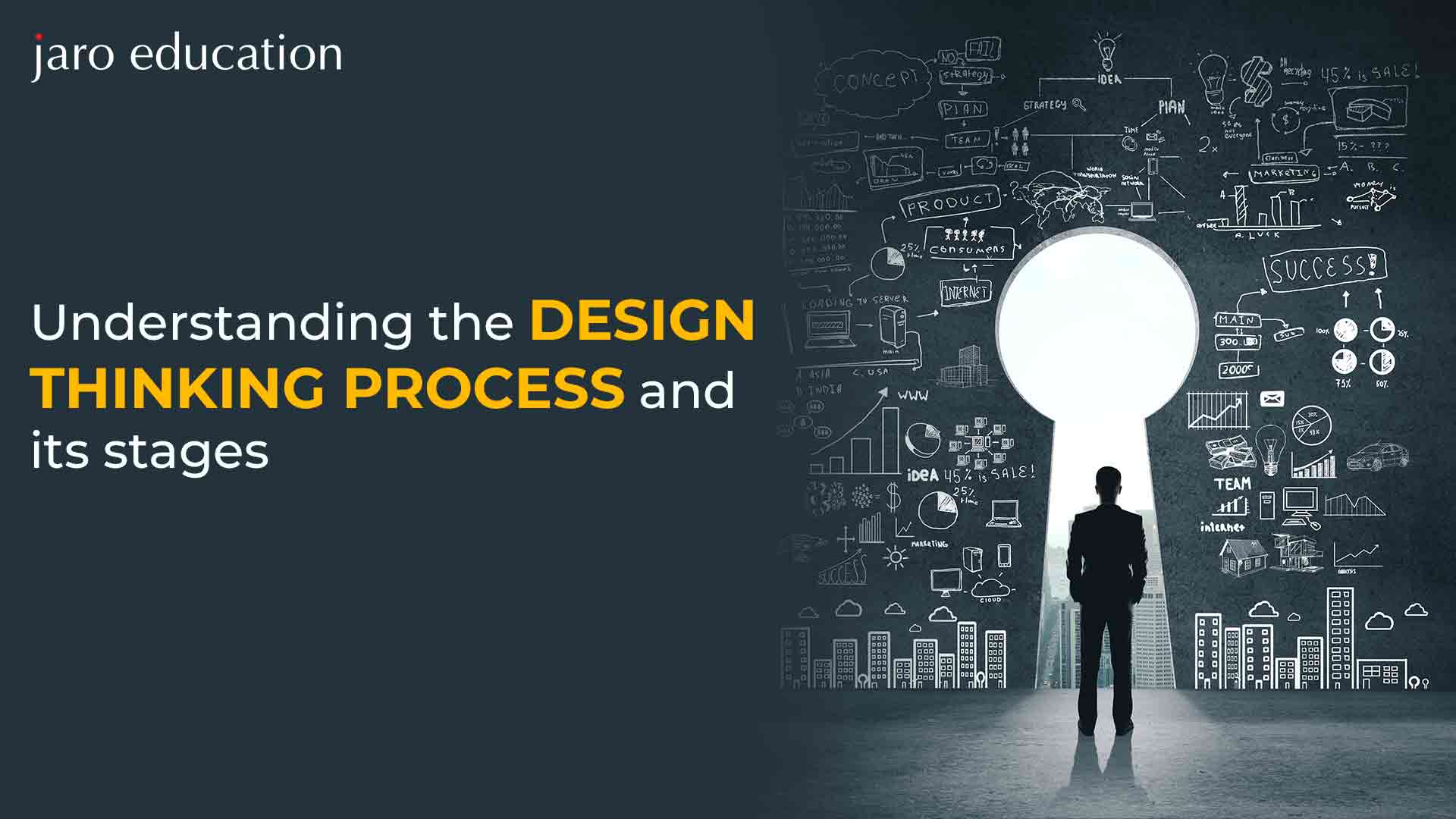Design thinking is a way to solve problems with a human-centred approach and try different things until the best solution is found. It includes figuring out peoples’ needs, coming up with new ideas and making prototypes to test them. The goal of these techniques is to find unique and creative solutions that really work.
Design thinking comprises five important stages, and each stage is necessary to create the solution making it work well. Whether you run a business or have your own company, knowing these stages can help you find better solutions.
If you want to improve your career in design innovation, you can join the Executive Programme in Product Innovation & Design Thinking for Business Growth at IIT Delhi. This course will enhance your skills and knowledge in a better way that can help you move forward in your career in product innovation management and design thinking.
Understanding the Design Thinking Process
Design thinking first came into existence between the 1950s to 1960s. It was not just a sudden event but was influenced by the industrial revolution and World War II. There was a big change in society when engineers, architects and other professionals, including industrial designers and cognitive scientists, worked together to find new ways of solving problems.
Around 1970, people started combining human resources, technology, and strategies to create design thinking. As time passed, it improved a lot and is now considered one of the best ways to create new ideas and innovative products.
What are the 5 Stages in the Design Thinking Process?
The Hasso-Plattner Institute at Stanford suggested five stages that are common to all design thinking processes. They can be used in various sequences according to the specific requirement. You can use them in any way and repeat them at the same time to get the best outcome. Let’s take a quick look at each of these stages:
Empathise
Design Thinking starts with empathy. You need to understand users’ needs to make the desirable products and services. In this phase, you observe and talk to real users to learn about their expectations, challenges and pain points. This allows you to create designs that consider real users, which is the essence of Design Thinking.
Define
In this stage of Design Thinking, you define the user problem you want to solve. You gather all your observations from the first stage and look for patterns and common themes. Then you create a problem statement explaining the challenge you want to address.
This can help you create a design brief that summarises the goals and requirements of the projects. You can organise the information by making a list of questions and answering them step by step.
Ideate
Ideation is the stage of design thinking where you generate ideas to solve the problem you identified earlier. This phase is about thinking creatively and exploring new angles without worrying about whether the ideas are feasible. You’ll hold brainstorming sessions in unusual locations to come up with as many ideas as possible. During ideation, you’ll refer back to your problem statement and narrow down your ideas for the next phase, which involves creating prototypes to test on real users.
Prototype
In this stage of Design Thinking, you make prototypes, which are small models or representations of your product or a part of it. The main purpose of this phase is to make something you can test with real users. By getting feedback, you can make sure that the final product solves the user’s problem and is easy to use.
Test
In the Design Thinking process, the fifth step is testing. You show your prototypes to real users and watch how they interact with them. This helps you find any design problems and get feedback from users. After testing, you can make improvements to your prototype.
Design Thinking is not always straightforward. If you find new problems during testing, you may need to start over from the beginning.
Wrapping up
Designers can create solutions that meet users’ needs by following five steps in the design thinking process. They focus on making the solutions functional and desirable for users. They can improve their ideas by trying different approaches and refining them until they find the best solution. This approach helps them be more creative and find better solutions for users.
If you are interested in upgrading your skills in design thinking and moving up in your career, you can join IIT Delhi’s Executive Programme in Product Innovation & Design Thinking for Business Growth. This course offers different ways to learn and includes live classes and guidance from experts who have experience in the industry. By considering this design thinking programme, you’ll learn practical skills that can help you achieve your career goals and succeed in this field.






